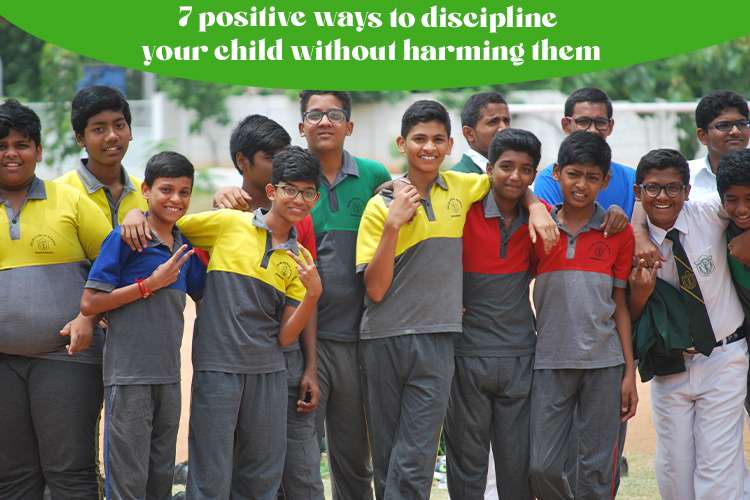Disciplining children is a critical aspect of their upbringing, ensuring their safety and the well-being of others. However, not all disciplinary methods are created equal. In this article, we’ll explore seven positive ways to discipline children without causing emotional harm.
1. Establish clear rules
Discipline begins with setting clear rules for children. Here are some guidelines to keep in mind:
- Clarity: Ensure rules are straightforward and easy for children to understand and follow.
- Age-appropriateness: Tailor rules to their age and maturity level, as what works for a toddler may not work for a teenager.
- Consistency: Enforce rules consistently to avoid confusion and frustration.
- Loving discipline: Discipline should always come from a place of love and understanding, aimed at teaching and guiding children.
Examples of rules and expectations include being respectful to others, telling the truth, taking responsibility for chores and homework, and following safety guidelines at home, school, and when with friends.
2. Provide consequences for misbehavior
Discipline often involves providing consequences for misbehavior. To guide children effectively –
- Reward Good Behavior: Recognize and reward positive behavior with incentives like stickers or treats.
- Consistency: Ensure consistent consequences for bad behavior to convey that it’s unacceptable.
- Focus on Teaching: Remember that discipline is about teaching proper behavior rather than making them feel bad.
- Patience: Understand that learning takes time, and don’t expect instant perfection.
3. Set an example by modeling good behavior
The most effective way to teach children good behavior is by demonstrating it yourself. Children learn by observing those around them. Here are some tips:
- Apologize When Necessary: Show that even adults make mistakes and take responsibility for them.
- Lead by Example: Be polite, patient, and kind in all interactions.
- Promote Healthy Habits: Encourage healthy eating, exercise, and good study habits by practicing them yourself.
- Praise Good Behavior: Offer praise and positive reinforcement when children exhibit good behavior.
4. Respond firmly but fairly
Balancing firmness and fairness is essential in discipline. Striking this balance will help children understand boundaries, expectations, and accountability. Here are some tips:
- Consistency: Be consistent in your disciplinary approach to avoid confusion.
- Fairness: Find a middle ground between being too lenient and too strict.
- Focus on teaching: Remember that discipline’s purpose is to teach proper behavior, not to punish.
- Patience: Be patient, strict, and fair in your discipline.
Be Consistent and Immediate
Discipline should focus on teaching, not punishing. Use a time-in approach to provide children with a safe space to reflect on their actions. Unlike punishment, which can make them feel bad and lead to more misbehavior, time-ins help children understand the consequences of their actions and how to make better choices in the future.
5. Create opportunities for problem-solving
Problem-solving skills are essential for children’s happiness and success. Encourage these skills by integrating problem-solving opportunities into everyday life:
- Avoid fixing everything: When children face a problem, resist the urge to solve it for them. Instead, help them brainstorm solutions, empowering them to address their challenges.
- Assign chores: Give age-appropriate tasks to foster responsibility and problem-solving (e.g., cleaning up a spill).
- Play strategy games: Games like chess or checkers promote logical and critical thinking, enhancing problem-solving abilities.
- Break down challenges: Teach children to break down complex problems into manageable parts, making them less daunting.
- Encourage multiple solutions: Highlight that there’s often more than one way to solve a problem, promoting flexible thinking.
By incorporating the practice of problem-solving into their daily lives, children can acquire the essential skills that will contribute to their future happiness and success.
6. Recognizing unmet needs
While maintaining discipline is vital, it’s equally important to remain attentive to signs that children may have unmet needs influencing their behavior. Observe for the following indications:
- Disruptive behavior: Keep an eye out for instances where children act out or disrupt, whether it’s at home or in a school setting.
- Social isolation: Notice if children withdraw from social interactions with friends and family.
- Risky Behavior: Be attentive to any engagement in hazardous activities or risky decision-making.
- Emotional Changes: Pay attention to shifts in emotions, like expressions of anger, aggression, or withdrawal.
When children display disruptive behavior, initiating a conversation with patience and empathy is crucial. Sometimes, such behavior can be a signal of more significant issues, such as abuse or neglect, indicating the need for prompt professional intervention to ensure their safety.
7. Use positive language
Using positive language when disciplining your child means talking to them in a way that helps them understand what you want them to do, instead of what you don’t want. Here’s how you can do it:
- Focus on what you want: Instead of saying, “Don’t run,” say, “Please walk.” Tell them what you’d like them to do.
- Use short and clear words: Say things like, “Put your toys in the toy box,” instead of, “Clean up your mess.” Simple and direct instructions work best.
- Share your feelings: Say, “I feel upset when toys are everywhere. Let’s clean up,” instead of blaming them. Explain how you feel.
- Give choices: Offer choices within limits, like, “Do you want the blue shirt or the red one?” It lets them make decisions while you guide them.
- Say ‘good job’: When they do something right, like sharing, say, “You did great sharing your toys!” Praise them for good behavior.
- No name-calling: Don’t use mean words like “messy.” Instead, say, “Let’s keep our room neat together.”
- Stay calm: Keep your voice calm and patient. Kids respond better when you’re understanding.
Using positive language helps your child learn and grow, and it makes them feel loved and supported. It’s like being their helpful guide instead of a strict boss.
Effective and positive discipline is an ongoing, nurturing process that plays a pivotal role in shaping a child’s character and behavior. Implementing these seven strategies lays the foundation for a child’s understanding of acceptable conduct. They promote a balanced approach that prioritizes teaching over punishment, fostering well-adjusted, responsible, and happy individuals. Remember, each child is unique, and patience, understanding, and adaptability are vital. Discipline is a collaborative effort among parents, caregivers, and professionals to create a supportive environment for positive growth. Embrace the journey, stay committed to these practices, and watch your child flourish into a confident and responsible individual.


